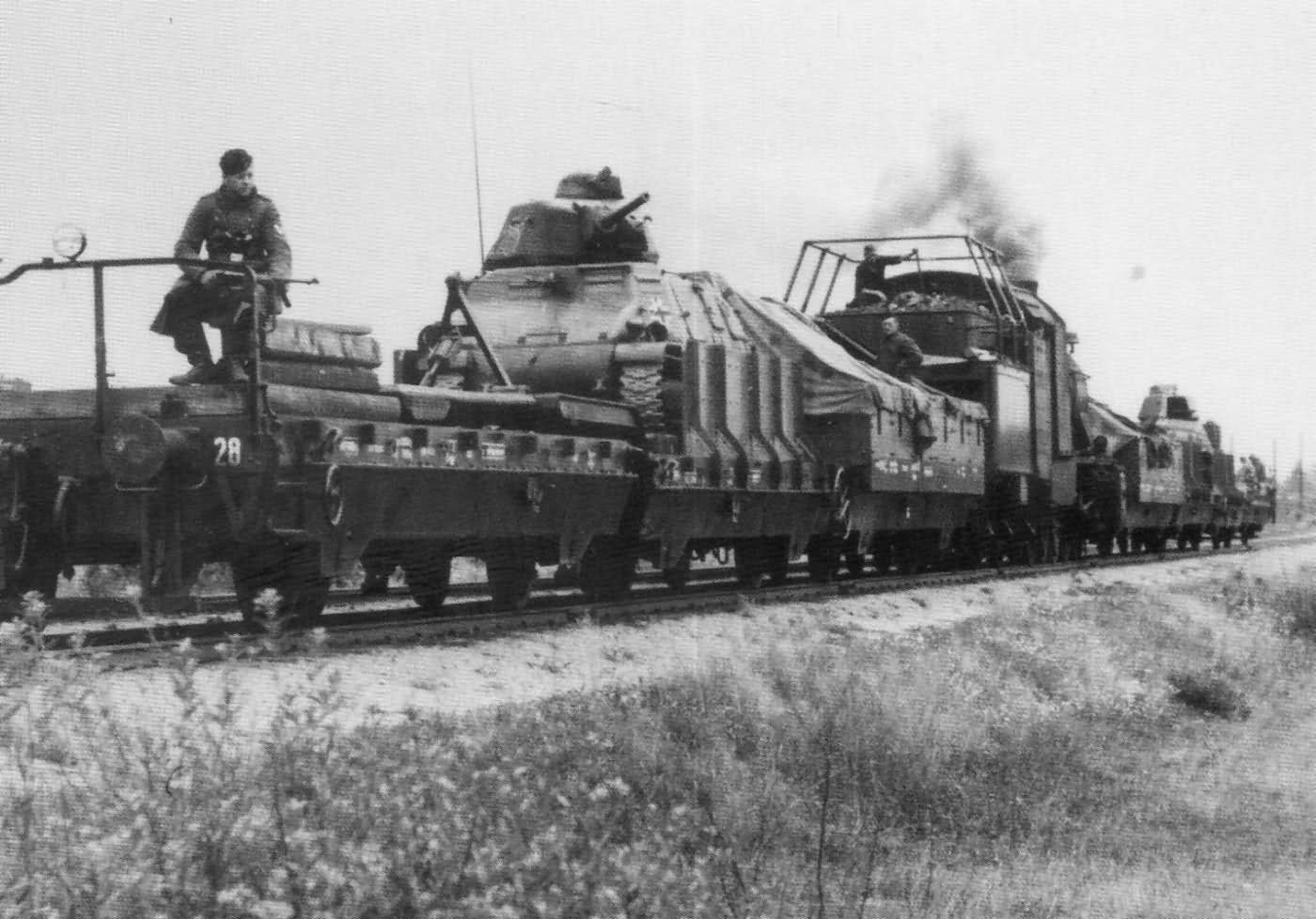Hello ladies and gents this is the viking telling you that today we are talking about

ARMOURED TRAIN

An armoured train is a railway train protected with armour. Armoured trains usually include railroad cars armed with artillery and machine guns. They were mostly used during the late 19th and early 20th century, when they offered an innovative way to quickly move large amounts of firepower. Most countries discontinued their use – road vehicles became much more powerful and offered more flexibility, and train tracks proved too vulnerable to sabotage as well as to attacks from the air. However, the Russian Federation used improvised armoured trains in the Second Chechen War of 1999–2009.
World War II
A typical Polish artillery car from 1939. Such cars were used in the trains Śmiały and Piłsudczyk
Poland used armoured trains extensively during the invasion of Poland. One observer noted that "Poland had only few armoured trains, but their officers and soldiers were fighting well. Again and again they were emerging from a cover in thick forests, disturbing German lines".
One under-appreciated aspect of so many Polish armoured trains being deployed during the Polish Defensive War in 1939 is that when German planes attacked the railroads, it was usually the tracks themselves. As late as September 17, three fresh divisions in the east were moved westward by train. On September 18, three more divisions followed.
This in turn prompted Nazi Germany to reintroduce armoured trains into its own armies. Germany then used them to a small degree during World War II. However, they introduced significant designs of a versatile and well-equipped nature, including railcars which housed anti-aircraft gun turrets, or designed to load and unload tanks and railcars which had complete armour protection with a large concealed gun/howitzer. Germany also had fully armoured locomotives which were used on such trains.
During the Slovak National Uprising, the Slovak resistance used three armoured trains. The Hurban, Štefánik and Masaryk, which were built in the Zvolen railway factory, are preserved and can be seen near Zvolen Castle.
The Soviets had a large number of armoured trains at the start of World War II but many were lost in 1941. Trains built later in the war tended to be fitted with T-34 or KV series tank turrets. Others were fitted as specialist anti-aircraft batteries. A few were fitted as heavy artillery batteries often using guns taken from ships.
Canada used an armoured train to patrol the Canadian National Railway along the Skeena River from Prince Rupert, British Columbia to the Pacific coast, against a possible Japanese seaborne raid. The train was equipped with a 75 mm gun, two Bofors 40 mm guns, and could accommodate a full infantry company. The No 1 Armoured Train entered service in June 1942 and was put into reserve in September 1943, to be dismantled in the following year.
Twelve armoured trains were formed in Britain in 1940 as part of the preparations to face a German invasion; these were initially armed with QF 6 pounder 6 cwt Hotchkiss guns and six Bren Guns. They were operated by Royal Engineer crews and manned by Royal Armoured Corps troops. In late 1940 preparations began to hand the trains over to the Polish Army in the West, who operated them until 1942. They continued in use in Scotland and were operated by the Home Guard until the last one was withdrawn in November 1944. A 6-pounder wagon from one of these trains is preserved at the Tank Museum. A miniature armoured train ran on the 15-inch gauge Romney Hythe and Dymchurch Railway.
Japanese Imperial Army also utilized armored trains when they engaged Chinese NRA and CPC troops in Second Sino-Japanese War.
I hope you liked this post and as always have a chilled day from the viking
Comments
Post a Comment